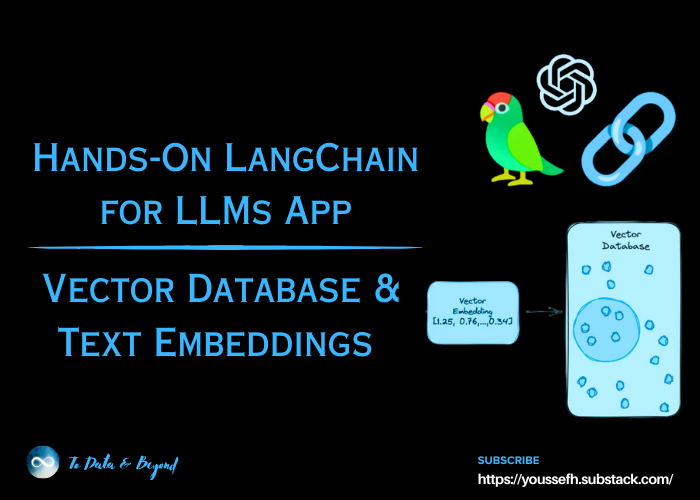
Hands-On LangChain for LLM Applications Development: Vector Database & Text Embeddings
Last Updated on January 25, 2024 by Editorial Team
Author(s): Youssef Hosni
Originally published on Towards AI.

Once you have loaded your documents and split them up into small, semantically meaningful chunks, it’s time to put these chunks into an index, whereby we can easily retrieve them when it comes time to answer questions about this corpus of data.
To do so, we will use embeddings and vector stores, a sophisticated approach that not only facilitates the storage of information but also transforms the way we answer questions about our data corpus.
In this article, we will first explore what is text embeddings and vector stores. Then, we will cover how to create and store text Embeddings in vector stores with LangChain. We will conclude this article with some failure cases of this method.
/ Image by AuthorWhat are Text Embeddings?What is a Vector Database?Creating Text Embeddings with LangChainStore Text Embeddings In Vector Database with LangChainFailure Cases
Most insights I share in Medium have previously been shared in my weekly newsletter, To Data & Beyond.
If you want to be up-to-date with the frenetic world of AI while also feeling inspired to take action or, at the very least, to be well-prepared for the future ahead of us, this is for you.
U+1F3DDSubscribe belowU+1F3DD to become an AI leader among your peers… Read the full blog for free on Medium.
Join thousands of data leaders on the AI newsletter. Join over 80,000 subscribers and keep up to date with the latest developments in AI. From research to projects and ideas. If you are building an AI startup, an AI-related product, or a service, we invite you to consider becoming a sponsor.
Published via Towards AI














